August 11 stands as one of history’s most eventful days, witnessing the rise and fall of empires, groundbreaking discoveries, and moments that shaped our modern world across centuries of human achievement.

Politics and Government Events on August 11
1919 – Germany’s Weimar Constitution Signed Into Law

Germany established its new democratic framework as the Weimar Constitution received official ratification. This foundational document created a federal republic structure following the collapse of the German Empire.
The constitution introduced progressive elements including proportional representation and extensive civil rights protections. However, its structural weaknesses would later contribute to the republic’s eventual downfall during the rise of Nazi Germany.
1952 – Hussein bin Talal Proclaimed King of Jordan
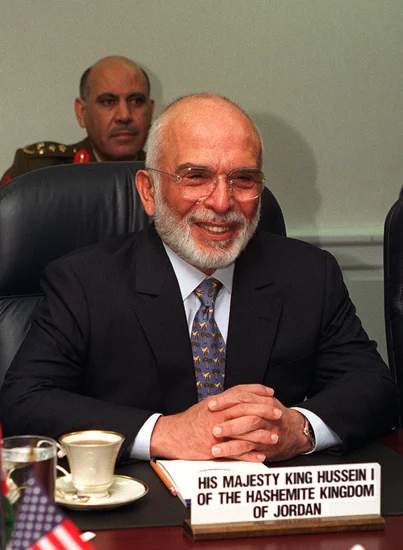
The young crown prince ascended to the Jordanian throne at age seventeen, beginning one of the longest reigns in modern Middle Eastern history. Parliament formally recognized his authority following his father’s abdication due to mental illness.
Hussein would guide Jordan through numerous regional conflicts and political transformations over the next four decades. His diplomatic skills helped maintain the kingdom’s stability amid the turbulent politics of the Middle East.
1960 – Chad Declares Independence from France
The African nation achieved full sovereignty after decades of French colonial rule, joining the wave of decolonization sweeping the continent. François Tombalbaye became the country’s first president, leading the transition to self-governance.
The independence ceremony marked the end of French administration that had begun in the early twentieth century. Chad’s newfound freedom came with significant challenges including ethnic divisions and economic development needs.
1961 – Dadra and Nagar Haveli Territory Created
India merged two former Portuguese enclaves to establish a new Union Territory, consolidating administrative control over these strategic coastal regions. The integration completed India’s absorption of Portuguese colonial holdings on the subcontinent.
Local populations had previously liberated these territories from Portuguese rule through grassroots resistance movements. The merger represented another step in India’s efforts to eliminate remaining European colonial presence.
Military and Naval History on August 11
1918 – Battle of Amiens Concludes
Allied forces achieved a decisive victory against German positions, marking the beginning of the final offensive that would end World War I. The battle demonstrated the effectiveness of combined arms tactics using tanks, aircraft, and infantry coordination.
German commanders later described this defeat as the “black day” of their army, recognizing the turning point in the war’s momentum. The Allied success at Amiens paved the way for the series of victories that would force Germany’s surrender.
1972 – Last U.S. Ground Combat Unit Departs South Vietnam
American military involvement in Vietnam entered its final phase as the last combat troops withdrew from active operations. The departure marked the practical end of direct U.S. ground engagement in the conflict.
President Nixon’s Vietnamization policy shifted responsibility for fighting to South Vietnamese forces while maintaining air support and advisors. This withdrawal represented a significant milestone in America’s longest military engagement.
1920 – Latvian-Soviet Peace Treaty Signed

The treaty formally ended the Latvian War of Independence, with Soviet Russia recognizing Latvia’s sovereignty and territorial integrity. The agreement established secure borders and normalized diplomatic relations between the two nations.
Russia renounced all claims to Latvian territory and agreed to pay reparations for wartime damages. This diplomatic success secured Latvia’s independence for two decades until Soviet occupation during World War II.
2003 – NATO Assumes Command in Afghanistan
The alliance took operational control of the International Security Assistance Force, marking NATO’s first major deployment outside Europe. This expansion of NATO’s mission represented a fundamental shift in the organization’s strategic focus.
The decision demonstrated NATO’s evolution from a purely defensive European alliance to a global security organization. Member nations committed to long-term stabilization efforts in Afghanistan following the Taliban’s overthrow.
Science and Discovery Milestones on August 11
1942 – Hedy Lamarr Patents Frequency-Hopping Technology

The Hollywood actress and composer George Antheil received a patent for their revolutionary communication system that would later enable modern wireless technology. Their frequency-hopping concept provided secure radio communications by rapidly switching between different frequencies.
Military applications initially motivated their research, but the technology eventually became fundamental to WiFi, Bluetooth, and cellular communications. Lamarr’s scientific achievement demonstrated her remarkable talents beyond her entertainment career.
1962 – Vostok 3 Launches with Andrian Nikolayev
The Soviet cosmonaut became the first human to experience extended microgravity during his pioneering space mission. Nikolayev’s flight provided crucial data about human adaptation to weightlessness conditions.
His successful mission lasted four days, establishing new duration records for human spaceflight. The achievements advanced Soviet space program goals and contributed valuable medical knowledge about astronaut health.
1969 – Apollo 11 Astronauts Released from Quarantine
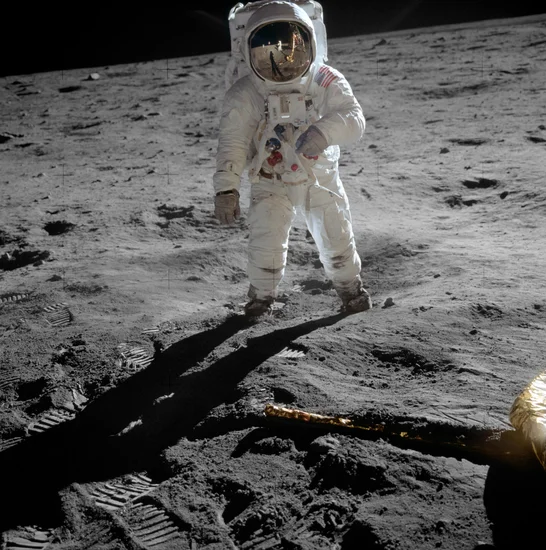
NASA concluded the three-week isolation period for Neil Armstrong, Buzz Aldrin, and Michael Collins following their return from the lunar surface. Medical experts confirmed the astronauts showed no signs of lunar contamination.
The quarantine protocol reflected scientific caution about unknown biological risks from moon samples and exposure. The astronauts’ clean bill of health cleared the way for public appearances and scientific debriefings.
2023 – Luna 25 Spacecraft Launches

Russia’s robotic lunar mission lifted off from Vostochny Cosmodrome, marking the nation’s return to moon exploration after decades of absence. The probe aimed to study the lunar south pole region and demonstrate landing capabilities.
The mission represented Russia’s renewed commitment to space exploration and lunar science research. Luna 25’s objectives included analyzing lunar soil composition and testing technologies for future missions.
Cultural and Arts Events on August 11
1973 – Hip Hop Culture Born in the Bronx

DJ Kool Herc hosted a legendary house party at 1520 Sedgwick Avenue that launched hip hop music and culture. His innovative beat juggling techniques and Coke La Rock’s rapping style created an entirely new artistic movement.
The party introduced revolutionary musical concepts that would transform global entertainment and youth culture. Hip hop’s birth in the Bronx demonstrated how grassroots creativity could reshape artistic expression worldwide.
1991 – Nickelodeon Launches First Nicktoons
The cable network premiered its groundbreaking animated series Doug, Rugrats, and Ren & Stimpy, revolutionizing children’s television programming. These original cartoons established Nickelodeon as a major force in animation production.
The Nicktoons demonstrated that cable networks could create compelling original content to compete with traditional broadcasters. Their success launched numerous animation careers and influenced decades of children’s entertainment.
1929 – Babe Ruth Achieves 500th Home Run

The baseball legend became the first player to reach this milestone plateau with a home run at League Park in Cleveland. Ruth’s achievement established a new standard for power hitting in professional baseball.
His 500th home run solidified his reputation as the game’s greatest slugger and most recognizable personality. The milestone contributed to baseball’s growth as America’s national pastime during the 1920s.
Religious and Social Events on August 11
1965 – Watts Riots Begin in Los Angeles

Racial tensions erupted into widespread civil unrest in the Watts neighborhood, highlighting deep-seated inequalities in American society. The riots lasted for six days and brought national attention to urban poverty and discrimination.
The violence revealed the limitations of civil rights legislation in addressing economic and social disparities. The Watts uprising influenced subsequent civil rights strategies and urban policy discussions throughout the decade.
1920 – Cork Hunger Strike Begins
Irish Republican prisoners initiated a protest that would ultimately claim three lives, including Cork’s Lord Mayor Terence MacSwiney. The hunger strike drew international attention to the Irish independence struggle.
MacSwiney’s death after 74 days without food became a powerful symbol of Irish resistance to British rule. The sacrifice galvanized support for the republican cause both domestically and internationally.
1945 – Anti-Jewish Pogrom in Kraków
Polish citizens attacked Jewish residents in the city, killing one person and wounding five others in a tragic display of postwar antisemitism. The violence occurred despite the recent liberation from Nazi occupation.
The pogrom reflected persistent antisemitic attitudes that survived the Holocaust and continued to threaten Jewish communities. Such incidents contributed to the massive emigration of Polish Jews in the postwar period.
Business and Economic Events on August 11
1992 – Mall of America Opens

The massive shopping complex in Bloomington, Minnesota, began operations as the largest mall in the United States. The facility combined retail shopping with entertainment attractions, creating a new model for commercial development.
The mall’s opening represented the peak of American shopping center culture and suburban commercial expansion. Its success influenced retail development patterns and consumer behavior across the country.
1934 – First Prisoners Arrive at Alcatraz

The federal government began operating its maximum-security prison on the infamous island in San Francisco Bay. Alcatraz housed the most dangerous criminals in the federal system, earning its reputation as “The Rock.”
The prison’s opening reflected new approaches to criminal justice and federal law enforcement capabilities. Alcatraz’s isolation and security features made it a symbol of American justice and punishment.
1959 – Sheremetyevo International Airport Opens
Moscow’s second-largest airport commenced operations, expanding the Soviet Union’s aviation infrastructure and international connectivity. The facility demonstrated Soviet technological capabilities and economic development.
Sheremetyevo’s opening reflected the growing importance of air travel in the Cold War era. The airport would later become a crucial hub for international flights and diplomatic travel.
Transportation and Infrastructure on August 11
1979 – Deadly Aviation Collision Over Ukraine
Two Aeroflot Tupolev Tu-134 aircraft collided over Dniprodzerzhynsk, killing all 178 people aboard both planes in one of aviation’s worst disasters. The tragedy highlighted critical gaps in Soviet air traffic control systems.
Investigators determined that communication failures and procedural errors caused the mid-air collision. The disaster prompted significant improvements in Soviet aviation safety protocols and air traffic management.
1982 – Pan Am Flight 830 Bombing

A terrorist bomb exploded aboard the aircraft flying from Tokyo to Honolulu, killing one passenger and injuring fifteen others. The attack demonstrated the vulnerability of commercial aviation to terrorist threats.
The bombing occurred during a period of increased international terrorism targeting civilian aircraft. The incident contributed to enhanced airport security measures and passenger screening procedures worldwide.
2006 – MT Solar 1 Oil Spill Disaster
The oil tanker sank off the Philippine coast near Guimaras and Negros Islands, causing the country’s worst environmental disaster. The spill contaminated pristine marine ecosystems and coastal communities.
The disaster highlighted the risks of maritime oil transport and inadequate safety regulations. Recovery efforts took years and demonstrated the long-term environmental consequences of marine pollution.
Sports and Recreation on August 11
1929 – Babe Ruth Hits 500th Career Home Run

The baseball legend achieved this historic milestone at League Park in Cleveland, becoming the first player to reach 500 home runs. Ruth’s accomplishment established a new benchmark for power hitting excellence.
His achievement captivated the American public and reinforced baseball’s status as the national pastime. The milestone contributed to Ruth’s legendary status as the game’s most iconic figure.
1991 – J.D. McDuffie Dies in NASCAR Crash

The veteran NASCAR driver was killed during a racing accident, highlighting the dangerous nature of professional motorsports. McDuffie’s death prompted discussions about improved safety measures in auto racing.
His passing marked the loss of a respected competitor who had participated in hundreds of races over his career. The tragedy contributed to ongoing efforts to enhance driver safety in professional racing.
1986 – János Drapál Motorcycle Racing Fatality
The Hungarian motorcycle racer died in a racing accident, demonstrating the extreme risks faced by professional motorcycle competitors. Drapál’s death highlighted the ongoing safety challenges in motorsports.
His passing represented another reminder of the physical dangers inherent in high-speed motorcycle racing. The tragedy contributed to ongoing discussions about safety improvements in motorcycle competition.
Notable Births on August 11
1950 – Steve Wozniak Born

American computer scientist and programmer Steve Wozniak entered the world, destined to co-found Apple Inc. His early fascination with electronics and mathematics shaped his future innovations.
Wozniak would later design the Apple I and Apple II computers, revolutionizing personal computing. His technical genius helped establish the foundation for the modern technology industry.
1921 – Alex Haley Born

American historian and author Alex Haley was born, beginning a life dedicated to exploring African American heritage and family history. His childhood experiences sparked his interest in genealogy and storytelling.
Haley would later write “Roots,” a groundbreaking work that traced African American family history back to Africa. His research methods and narrative style influenced historical writing and popular culture.
1936 – Jonathan Spence Born
English-American historian Jonathan Spence was born, beginning a distinguished career in Chinese studies and historical scholarship. His academic interests focused on Chinese culture and society.
Spence would become one of the most respected Western historians of China, writing numerous acclaimed books. His work bridged Chinese and Western historical perspectives with exceptional scholarship.
1965 – Viola Davis Born

American actress Viola Davis was born, beginning a journey that would lead to extraordinary achievements in theater, film, and television. Her early interest in performance arts shaped her career ambitions.
Davis would later become the first African American woman to achieve the Triple Crown of Acting. Her powerful performances have earned critical acclaim and numerous prestigious awards.
1967 – Joe Rogan Born

American actor, comedian, and television host Joe Rogan was born, beginning a diverse career in entertainment and media. His early interests in comedy and martial arts influenced his professional development.
Rogan would later host one of the world’s most popular podcasts, “The Joe Rogan Experience.” His conversations with diverse guests have made him a significant figure in contemporary media.
1983 – Chris Hemsworth Born

Australian actor Chris Hemsworth was born, beginning a journey that would lead to international stardom. His early interest in acting and physical fitness shaped his career trajectory.
Hemsworth would later achieve global fame portraying Thor in the Marvel Cinematic Universe. His performances have made him one of Hollywood’s most recognizable action stars.
Notable Deaths on August 11
1919 – Andrew Carnegie Dies

Scottish-American businessman and philanthropist Andrew Carnegie passed away, ending a remarkable life of industrial achievement and charitable giving. Carnegie built his fortune in the steel industry before dedicating himself to philanthropy.
His death marked the end of an era in American industrial development and philanthropic innovation. Carnegie’s libraries, universities, and foundations continue to benefit society more than a century later.
1956 – Jackson Pollock Dies

American painter Jackson Pollock died in a car accident, cutting short the life of one of America’s most influential artists. His innovative drip painting technique revolutionized abstract expressionism.
Pollock’s death at age 44 ended a career that had transformed American art and challenged traditional painting methods. His artistic legacy continues to influence contemporary artists worldwide.
1937 – Edith Wharton Dies
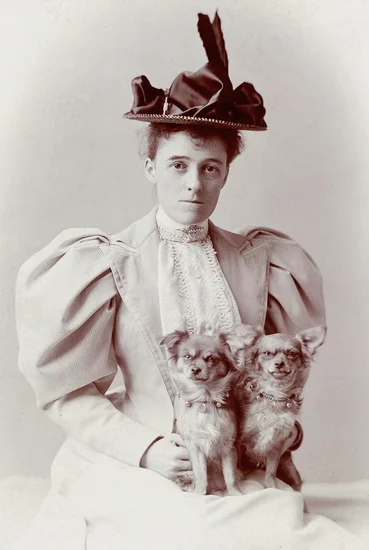
American novelist and short story writer Edith Wharton passed away, concluding a distinguished literary career. Her novels explored the complexities of American high society with remarkable insight.
Wharton’s death marked the loss of one of America’s greatest literary voices and the first woman to win the Pulitzer Prize for Fiction. Her works continue to be studied and celebrated today.
2014 – Robin Williams Dies

American actor and comedian Robin Williams passed away, ending a career that brought joy to millions worldwide. His improvisational skills and emotional range made him one of entertainment’s most beloved figures.
Williams’ death shocked fans globally and highlighted the struggles of mental health issues. His comedic genius and dramatic performances left an indelible mark on film and television.
2018 – V.S. Naipaul Dies
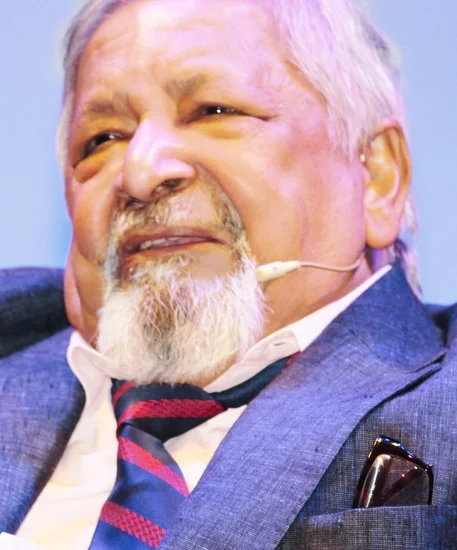
British writer and Nobel Prize laureate V.S. Naipaul passed away, concluding a distinguished literary career spanning decades. His novels and travel writing explored themes of colonialism and cultural identity.
Naipaul’s death marked the loss of one of the most important voices in postcolonial literature. His works provided profound insights into the complexities of cultural displacement and identity.
2009 – Eunice Kennedy Shriver Dies
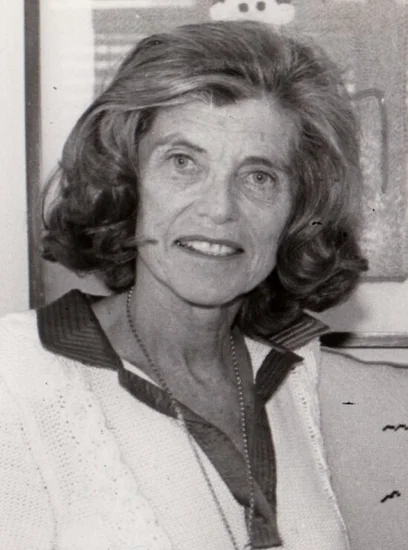
American activist and founder of the Special Olympics Eunice Kennedy Shriver passed away, ending a lifetime dedicated to disability rights advocacy. Her work transformed opportunities for people with intellectual disabilities.
Shriver’s death marked the loss of a pioneering advocate who changed global attitudes toward disability. The Special Olympics movement she founded continues to serve athletes with intellectual disabilities worldwide.
Holidays and Observances on August 11
Independence Day in Chad
Chad celebrates its independence from France, commemorating the nation’s achievement of sovereignty in 1960. The holiday marks the end of French colonial rule and the beginning of self-governance.
Citizens participate in parades, cultural events, and patriotic ceremonies throughout the country. The celebration reflects national pride and remembrance of the independence struggle.
Mountain Day in Japan
Japan observes Mountain Day, a national holiday celebrating the country’s mountainous terrain and natural beauty. The holiday encourages outdoor activities and appreciation of nature.
The observance promotes environmental awareness and healthy recreation in Japan’s extensive mountain regions. Many families use the holiday for hiking, camping, and mountain climbing activities.
Flag Day in Pakistan
Pakistan commemorates Flag Day, honoring the national flag and the values it represents. The observance includes ceremonies at government buildings and educational institutions.
Citizens display the national flag and participate in patriotic activities throughout the country. The day reinforces national unity and pride in Pakistani identity and independence.
